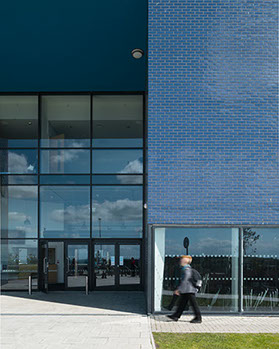
2010-2011: The Hastings Academy
Architect: Feilden Clegg Bradley Studios
Nyla Hussain was the project architect for The Hastings Academy, by Feilden Clegg Bradley Studios, from 2010 to 2011. She played a key role in designing the scheme that was successful in winning the bid, promoting dialogues with the end user, and leading the team through to planning submission.
The site sits on a steep hill within the High Weald Area of Outstanding Natural Beauty with views overlooking the Ore Valley. The new two-storey school accommodates 900 students. The design of the building responds to its unusual context, transforming the unusable landscape into beneficial spaces. The building centres on a glazed school hall, which has long view across the landscape, and an outdoor amphitheatre, which resulted from the natural slopes in the landscape. Four stacked school clusters are positioned on the sloping site in such a way that each cluster has direct access to an outdoor learning space. The new open plan teaching spaces are designed to accommodate flexible teaching methods.
The building adopts a flexible design, which can be adapted to address new technologies in the future. The process of a strong dialogue with the teachers and students to establish key adjacencies of spaces has resulted in designing the building from inside out, while also responding to its environmental context.
Images courtesy of Feilden Clegg Bradley Studios
© FCB STUDIOS
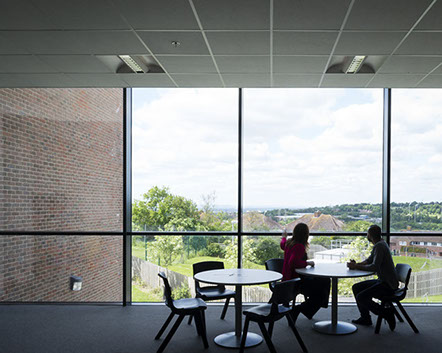
© FCB STUDIOS
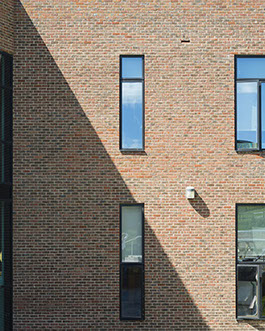
© FCB STUDIOS
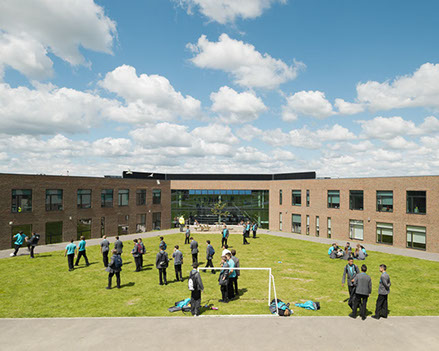
© FCB STUDIOS
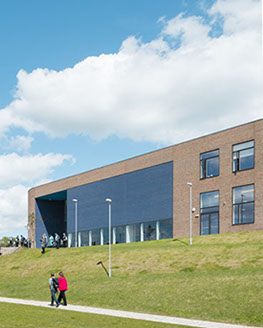
© FCB STUDIOS
2008-2010: Thamesview School 2010
Architect: Feilden Clegg Bradley Studios
Nyla Hussain was the project architect for Thamesview School, by Feilden Clegg Bradley Studios, from 2008 to 2010. She led the project during the construction phase and engaging in dialogues with the teachers and students throughout the build stage, creating spaces that the end-users take pride in.
The site is located on an existing school playground. The new-build secondary school accommodates 800 students. However, the ‘schools within a school‘ model gives a sense of a smaller school environment. The building is laid out with 4 school clusters off a central heart space maximising views and light into each space. Each school is designed with its own strong identity in response to the student preference.
The design avoids the traditional long corridors and instead uses the circulation spaces as learning and gathering space.
The school is designed to experiment with a flexible teaching method by creating a series of open plan teaching spaces at the end of each school. These spaces are flexible and designed to allow them to easily adapt a traditional classroom layout. The building is a successful learning and teaching environment with a strong identity that the community can be proud of.
Images courtesy of Feilden Clegg Bradley Studios
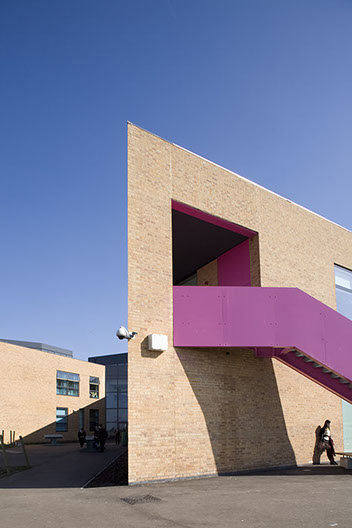
© FCB STUDIOS
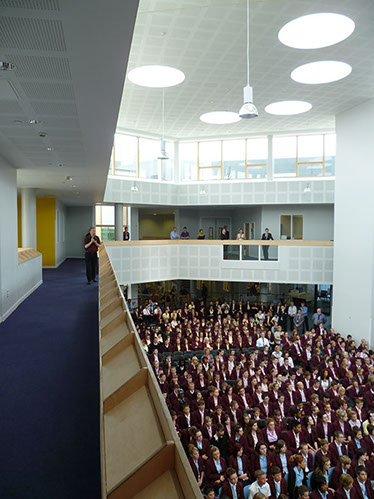
© FCB STUDIOS
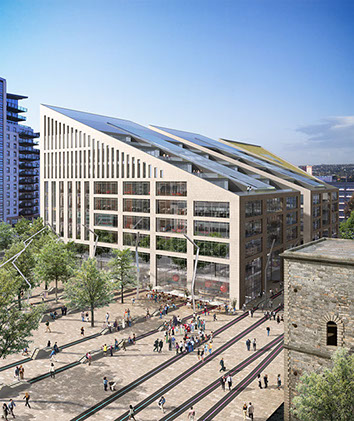
© FCB STUDIOS
2007-2008: Wellington Place, Leeds
Architect: Feilden Clegg Bradley Studios
Wellington Place mixed-use masterplan development, by Feilden Clegg Bradley Studios, occupies a former old railway station site in Leeds. The low carbon development is designed around a series of public squares and pedestrian connections. The sculptural building forms are a result of defining key routes through the site, while the roofs forms maximise daylight into the streets and squares. The sculptural forms are accentuated by use of solid stone fabric with deep reveals.
Nyla Hussain was the project architect for Wellington Place from 2007 to 2008. She played a key role in progressing three residential and office buildings to detailed planning consent.
Images courtesy of Feilden Clegg Bradley Studios
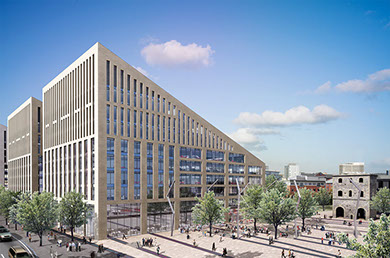
© FCB STUDIOS

© FCB STUDIOS

© Denton Cotker Marshall
2003-2006: Civil Justice Centre, Manchester
Architect: Denton Corker Marshall
Manchester Civil Justice Centre is an award winning building for 50 courtrooms, using low energy environmental principals such as solar shading and natural ventilation that have informed its unique appearance. The building is broken into three linear elements each representing a distinct function, courtrooms, core and public space. The elevated projecting boxes enclose courtrooms while the main facade is expressed by solar screening to the courtroom corridors. Due to its high sustainable design, the building has achieved a BREEAM rating of excellent.
Nyla Hussain worked for Denton Corker Marshall for 3 years between 2004 and 2006, as senior project coordinator and team leader for the court-building project. Her role involved leading a number of packages from tender through to construction as well as leading structural and mechanical coordination in the construction stages. The complexity of the project derived from the integration of ‘light/air duct’ shelves to serve fresh air via wind scoops in the façade and reflected daylight to rooms that required high level of acoustic treatment and the requirement to fire rated walls, ceilings and platforms forming the light/air ducts to meet the fire strategy of the building.
The key emphasis in this project was attention to detail and processes to achieve a high quality of finishes, which is an important approach that is influencing our practice.
Images courtesy of Denton Corker Marshall
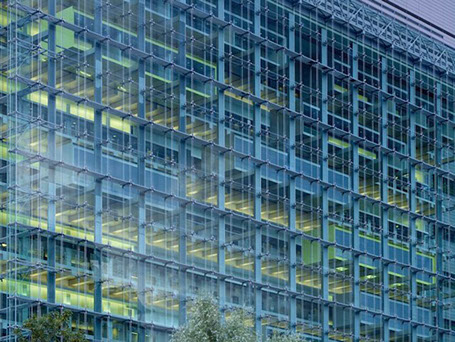
© Denton Cotker Marshall
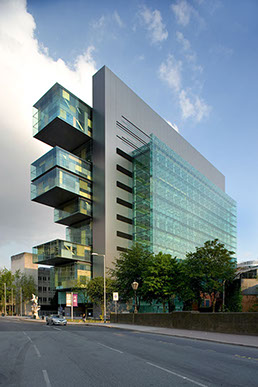
© Denton Cotker Marshall
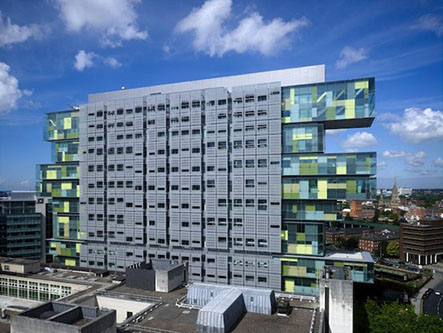
© Denton Cotker Marshall
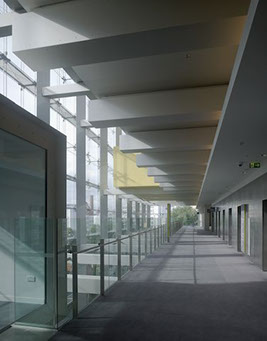
© Denton Cotker Marshall
RIBA Chartered Practice
©2023 Nyla Hussain Architects